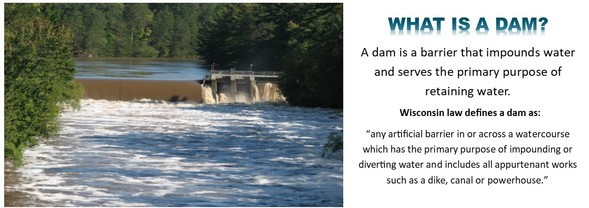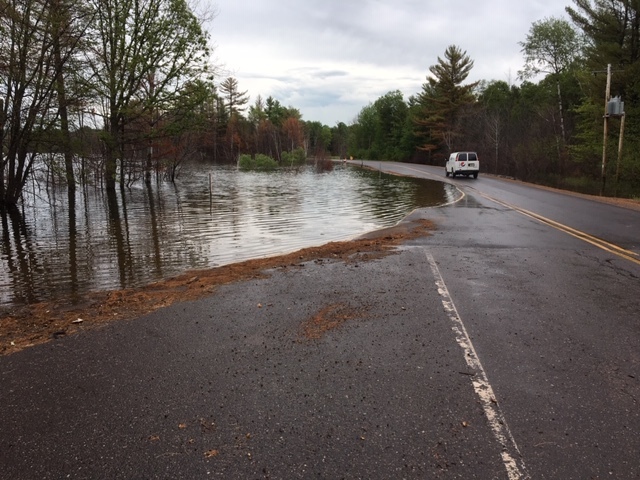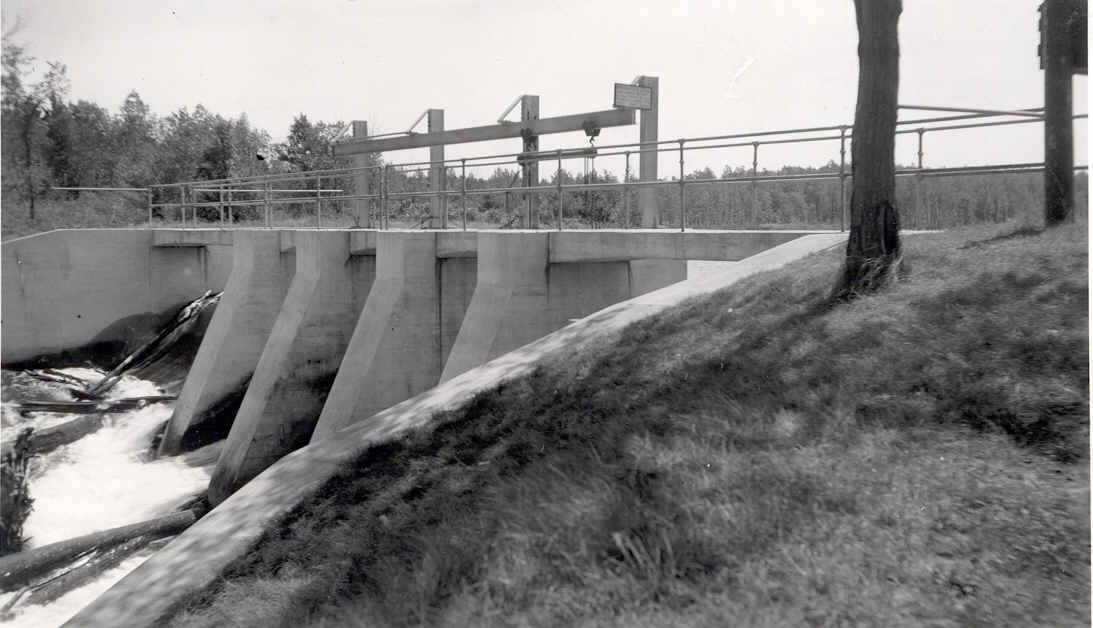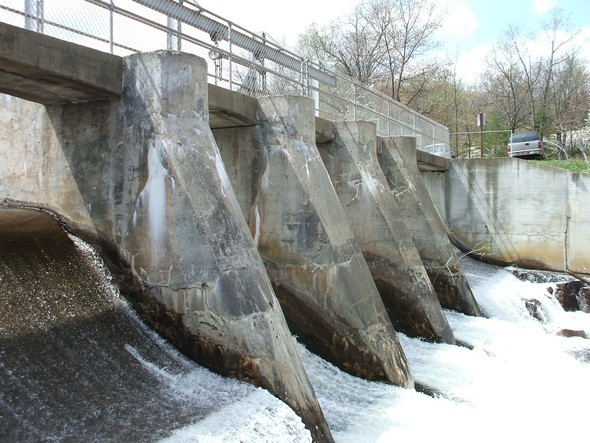|
July 2019


The following is a press release that the Department issued on June 14, 2019.
RHINELANDER - Over the past several years Wisconsin has received a record-breaking amount of precipitation resulting in high water and flooding issues in several areas across the state.
Many lakes and rivers have flooded this spring and many waterways are still well above normal for this time of year from Bayfield and Vilas counties in Northern Wisconsin to Rock County in the south and from the Fox Valley to the Mississippi River.
Bayfield County temporarily closed County Highway N because of high water on Pigeon Lake and is expected to remain closed for several weeks. Piers and shorelines are underwater on Joyce Lake in Vilas County because water levels are so high.
In the south, a private campground on Clear Lake in Rock County recently received a permit to raise an access road that has been flooded by rising waters since spring. Crystal and Fish lakes in Columbia and Dane counties are seepage lakes - lakes without inlets or outlets - that have had a history of flooding out shorelines and homes for years. Many of the lots at the campgrounds and resorts around the lake have been flooded for months.
"At this time of the year we would normally see water levels starting to recede, but the problem is made worse by the rising groundwater and river levels," said Keith Patrick, a DNR wetland and waterways team leader in Rhinelander. "The problems are generally most pronounced right now at many seepage lakes and are usually closely associated with groundwater. The reality is that on many seepage lakes water levels will not recede until groundwater levels decline."
In some areas, water levels in long-term groundwater monitoring wells are higher than they have been since the 1930s. Rivers are also running very high in many areas.
Rock and Jefferson counties currently have slow-no-wake ordinances in place on the Rock River. Sauk County has one on the Wisconsin River and Waushara County has one on the Wolf River because of elevated river levels.
In addition, Mississippi River flooding in April and May hit many areas across Trempealeau and La Crosse counties, and in March, flooding events in Green Bay, Fond du Lac and Manitowoc closed several roadways.
"For private property issues, homeowners flood insurance may be best suited to assist the property owners during a difficult time," Patrick said.
Wisconsin Emergency Management (WEM) has a flooding hazard mitigation program that could assist some people in preventing future flood damage. The Federal Emergency Management Agency (FEMA) also has a Flood Mitigation Assistance Grant Program that can direct people to federal resources available to lessen the impact of flooding.
If residents have questions about flooding and seepage lakes, more information is available on the DNR website, dnr.wi.gov, search keyword "flood" or "waterway," and select the link in the right side navigation panel for "Waterway team contacts."
By: Keith Patrick, DNR wetlands and waterways
|
The DNR Dam Safety Program conducted free workshops in Eau Claire, Richland Center, Sullivan, and Tomahawk in late spring 2019 for dam owners. In Wisconsin, owners of large dams are required to have Emergency Action Plans and Dam Failure Analyses for their dams. In a survey conducted last year, dam owners indicated they were interested in training on these topics. In the workshops dam owners learned how to draft and update Emergency Action Plans (EAPs) and developed an understanding of Dam Failure Analyses (DFAs).
DNR staff explained that an EAP identifies potential emergency conditions at a dam and prescribes procedures to be followed to reduce the likelihood of loss of life and to minimize property damage. Dam owners learned about parts of an EAP, including how to fill in emergency contact lists and flowcharts, how to develop location maps, where to find descriptive information for the dam, how to develop a list of resources available during an emergency, and how to identify the emergency level at a dam.
DFAs are an important component of the EAP for a dam and are completed by engineers licensed to work in Wisconsin. Upon completion of the DFA, engineers create a hydraulic shadow map, showing the land downstream of the dam that would flood if the dam were to fail. Dam owners learned how hydraulic shadow maps are developed and saw how to use the map and the data behind it to identify critical facilities downstream of a dam. Critical facilities need to be listed in the dam’s EAP and might include locations of residential homes, hazardous materials, or roads and bridges that would be impacted.
DNR Water Management Engineers were available after each information session to answer site specific questions from dam owners. Eighty percent of the people who completed the survey indicated that they are interested in attending future workshops. Stay tuned to GovDelivery emails from the DNR dam safety program for notifications about future trainings!
A person who has looked at various concrete structures has likely noticed that concrete changes over time. Some of those changes may have been color, staining, efflorescence (crystalline deposit of salts on the surface), cracking, or spalling. Dam owners who have a concrete structure should ask themselves if any of these changes could be indicators for potential repairs. The answer is typically yes.
Reasons for the changes vary. Changes can be caused by weathering, temperature, shrinkage, settlements, design errors, abrasion or wear, chemical reactions, accidental loadings, and construction errors. For this discussion, we are going to focus on five elements of concrete construction:
- Mixing
- Transporting/conveying
- Placing
- Consolidating
- Curing
All five elements play a role in providing a long-lasting structure. Concrete changes over time, both internally and externally. Proper construction techniques as described below help insure that the concrete structure will function as designed and be less prone to those changes that require repairs.
Concrete is comprised of aggregates, cement, and water. Proper mixing is needed to provide adequate design strength for resisting compressive and tensile loads. Admixtures can also be an essential element in the mix to help with temperature, freeze-thaw resistance, and workability. Adding too much water to the mix can change the water-to-cement ratio, potentially causing segregation, shrinkage cracking and a decrease in the compressive strength. Testing the concrete mix is important and can include measurements of slump, entrained air, and making test cylinders for compression testing. Tests taken during the pour will provide documentation that the concrete is meeting its intended design.
Transporting/conveying is the process of transferring the fresh concrete to its final place in the forms. Properly transferring the concrete will prevent segregation of the individual components within the mix. If segregation occurs, heavier aggregates will settle, and water will rise, leading to loss of strength and shrinkage cracking.
Placing concrete is the process of transferring fresh concrete from the conveying device to the forms. Prior to placement, proper formwork is installed to hold the wet concrete in place until the formwork can be removed. Steel reinforcement is properly spaced within the forms and secured in-place. Hardened surfaces from previous concrete lifts must be cleaned and treated properly. Forms should be treated for easy removal. Removing the forms too soon (i.e., before the concrete reaches the desired compressive strength) can lead to stress cracking. Reinforcement placed too close to forms can lead to concrete spalling and exposed reinforcement.
Consolidating the concrete takes place immediately after the wet concrete is placed into the forms and is typically achieved by using vibrators and limited hand tamping. In some instances, chemical admixtures are used within the design mix to allow larger slumps and increase the workability. Proper consolidation prevents honeycombing (exposed coarse aggregate on the surface that looks like a “honeycomb”) and assures a close contact/bond with the steel reinforcement.
Curing the concrete allows the fresh concrete to harden and reach its intended design strength. Typically, 70 percent of its strength is reached within the first week. Once the forms are removed, surface curing is performed to prevent the concrete surfaces from losing moisture. Rapid loss of moisture could lead to shrinkage cracking. Proper curing can be achieved by keeping exposed surfaces wet and by using sealing compounds. For cold weather construction, the concrete should also be protected from freezing and low temperatures. Proper curing and temperature control minimize shrinkage and result in less cracking.
In summary, all concrete will change over time. An understanding of how concrete is properly constructed can help you evaluate why some of those changes may have occurred. Proper construction (and repair) techniques as described above will help insure that your structure will function as designed and provide a long life. Inspecting and monitoring the condition of your concrete structure should be a part of your Inspection, Operation, & Maintenance (IOM) Plan for the dam. Neglecting repairs over time, can result in higher repair costs and unwanted reconstruction.
 Chute Pond Dam, July 1941
 Chute dam, May 2007. Concrete deterioration.
|